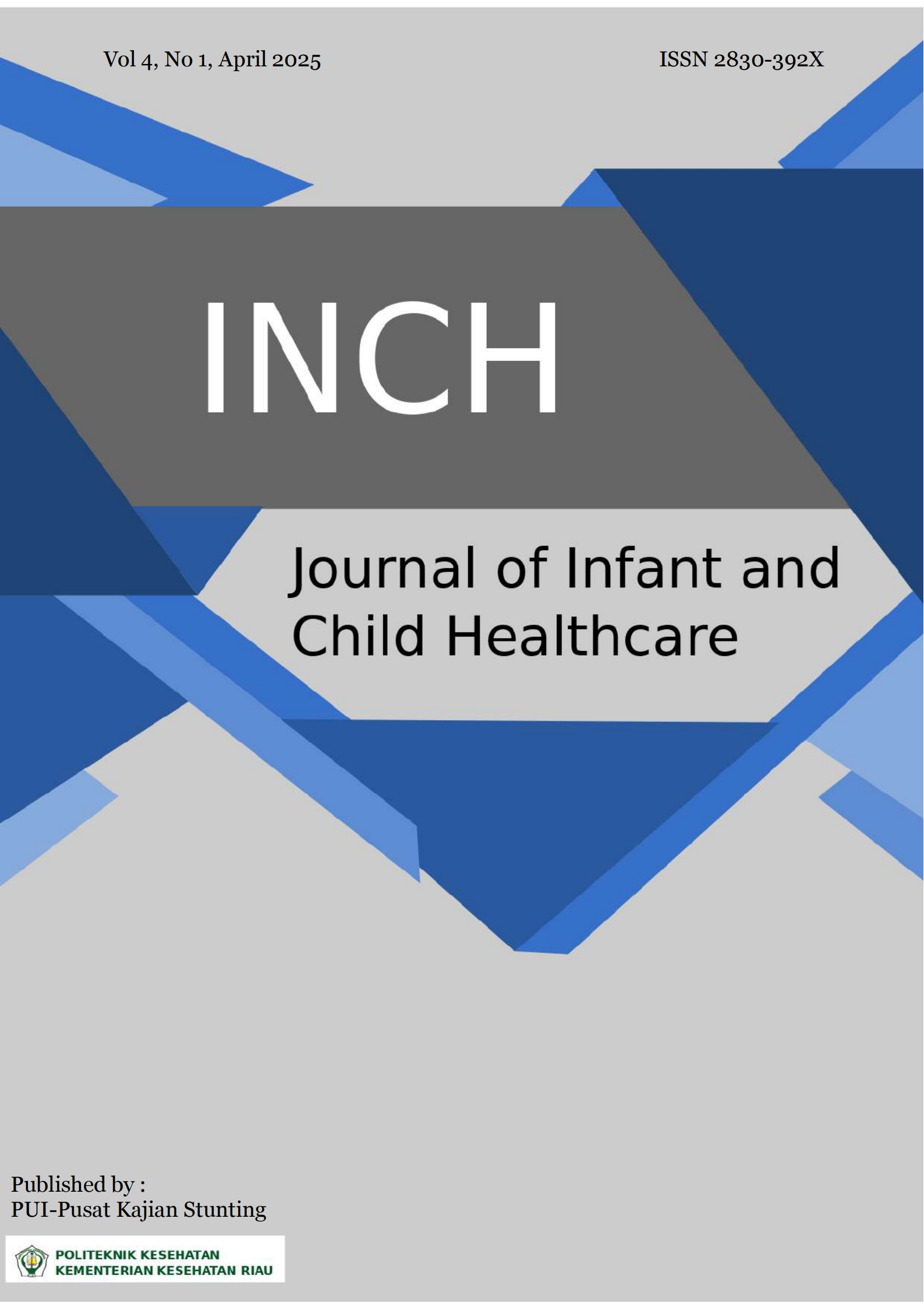Application of Pursed Lip Breathing Therapy to Improve Oxygenation Status in Children with Pneumonia
Abstract
Pneumonia is a respiratory tract infection that can cause toddlers death in the world. Transmission of Pneumoniae occurs through direct person-to-person contact via respiratory droplets. Pneumonia causes the alveoli to be filled with pus and fluid, which makes breathing painful and limited oxygen intake. One of the implementation to improve the airway of children with pneumonia is Pursed Lips Breathing therapy. The objective is to identify the application of pursed lip breathing therapy in children with pneumonia. This method was a descriptive case study approach with two subjects in the Payung Sekaki Community Health Center working area in April 2022. The results showed a change in the oxygenation status of subject I HR: 34 x/m RR: 90x/m Breathing Pattern: and subject II HR: 32x/m RR: 90x/m Breathing Pattern: Regular The conclusion is application of pursed lip breathing therapy can using by parent with pneumonia children in home.
References
Andrian, M., & Rosyid, F. N. (2024). Effect of pursed lip breathing (PLB) exercises on respiratory rate among patients with pneumonia. Malahayati International Journal of Nursing and Health Science, 07(3), 276–282.
Azizah, R. A. U., Nataliswati, T., & Anantasari, R. (2018). Pengaruh Latihan Pursed Lips Breathing terhadap Perubahan RR Pasien Pneumonia di RSUD Lawang. Jurnal Ners Dan Kebidanan (Journal of Ners and Midwifery), 5(3), 188–194. https://doi.org/10.26699/jnk.v5i3.art.p188-194
Dinas Kesehatan Provinsi Riau. (2019). Profil kesehatan Provinsi Riau Tahun 2019. Pekanba.
Fatimah, N., Sukartini, & Tandirogang, N. (2020). Karakteristik Balita Penderita Pneumonia Berdasarkan Faktor Risiko Di Rsud Abdul Wahab Sjahranie Samarinda Tahun 2018. Jurnal Kebidanan Mutiara Mahakam, 8(1), 38–45. https://doi.org/10.36998/jkmm.v8i1.73
Gea, N. Y. K., & Nurhaeni, N. (2020). DOI: http://dx.doi.org/10.33846/sf11206 Intervensi Bermain Teraupeutik Terhadap Saturasi Oksigen Anak Usia Prasekolah Dengan Pneumonia Nurti Yunika Kristina Gea, 11(April), 137–141.
Kemenkes. (2020). Profil Keseahtan Indonesia Tahun 2019. Kementerian Kesehatan RI. Jakarta. https://doi.org/10.5005/jp/books/11257_5
Kementerian Kesehatan RI. (2019). Laporan Riskesdas 2018 Nasional. Lembaga Penerbit Balitbangkes. Jakarta: Kementerian Kesehatan RI. Retrieved from https://repository.badankebijakan.kemkes.go.id/id/eprint/3514/1/Laporan Riskesdas 2018 Nasional.pdf
Komala, R. I., & Ekawaty, F. (2024). Penerapan Terapi Pursed Lips Breathing Dengan Modifikasi Tiup Balon Terhadap Status Oksigenasi Pada Anak Dengan Bronkopneumonia Di Bangsal Anak RSUD Raden Mattaher Jambi, Jurnal Kesehatan Tambusai, Vol 5 (3), 8397–8405.
Lilik Lestari, M. P., Wanda, D., & Nurhaeni, N. (2019). The Effects of Modified Pursed Lips Breathing on Oxygenation Status in Children. Comprehensive Child and Adolescent Nursing, 42(sup1), 1–8. https://doi.org/10.1080/24694193.2019.1577920,
Muliasari, Y., & Indrawati, I. (2018). Efektifitas Pemberian Terapi Pursed Lips Breathing Terhadap Status Oksigenasi Anak Dengan Pneumonia. NERS Jurnal Keperawatan, 14(2), 92. https://doi.org/10.25077/njk.13.2.86-95.2017
Nguyen, J. D., & Duong, H. (2025). Pursed-lip Breathing. StatPearls. Retrieved from https://www.ncbi.nlm.nih.gov/books/NBK545289/
Nugroho et al. (2018). Pengaruh bermain meniup balon (ballon therapy). Berkalah Ilmiah Mahasiswa Ilmu Keperawatan Indonesia, 6(2), 39–46.
Sulisnadewi, Labir, & Ribek. (2015). Status Oksigenasi Balita Dengan Pneumonia. Skripsi. Jurusan Keperawatan Politeknik Kesehatan Denpasar, 1–10.
Zulkifli, Z., Mawadaah, E., Benita, B. A., & Sulastien, H. (2022). Pengaruh Pursed Lip Breathing Exercise terhadap Saturasi Oksigen, Denyut Nadi dan Frekuensi Pernapasan pada Pasien Asma Bronkial. Jurnal Keperawatan Jiwa, 10(1), 203. https://doi.org/10.26714/jkj.10.1.2022.203-210






